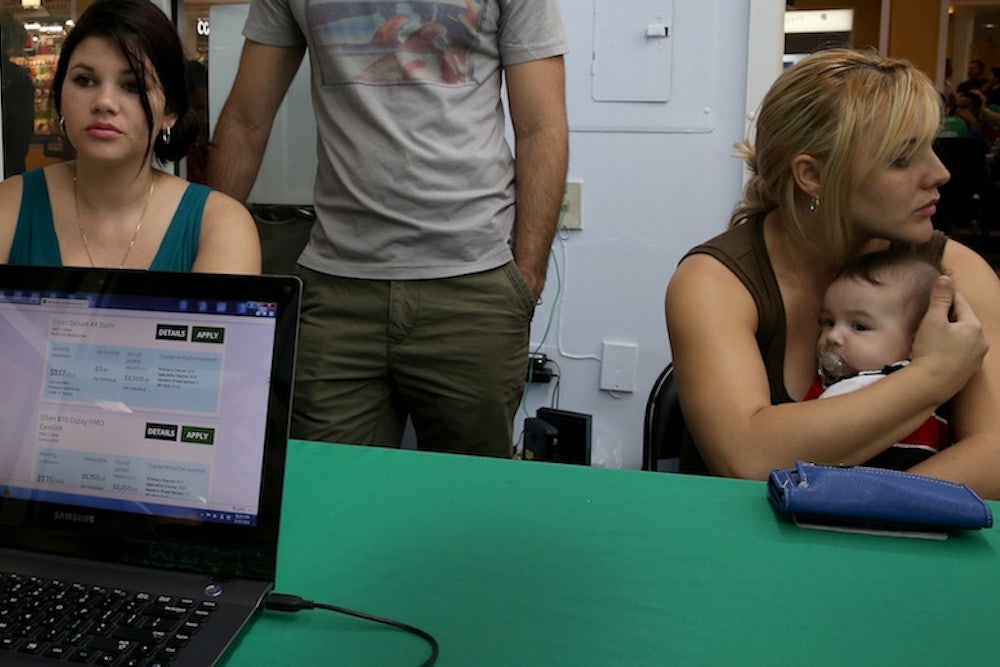Obamacare remains controversial, but lots of people seem to be using it. According to data that the Department of Health and Human Services released on Tuesday afternoon, more than 4.2 million Americans have used an Affordable Care Act marketplace to select a private insurance policy. Another 4.4 million have sought, and received, approval to enroll in Medicaid.

Those figures remain shy of original, internal projections that HHS made. But that's in good part the result of Obamacare’s early technical problems, with federal and many state sites effectively non-functional for October and part of November. The day-to-day, week-to-week pace of enrollment is now closer to what experts had predicted all along, though in February it lagged a bit. (The original projection for last month was 1.27 million; actual enrollment turned out to be 940,000.) By the time open enrollment ends, on March 31, the total number of people selecting private plans almost certainly won’t be the 7 million target the administration once identified. It should be more than 5 million, although how much more remains to be seen.
Of course, these numbers offer just one, very partial glimpse of how the Affordable Care Act is working. HHS doesn’t have data on whether these people had insurance previously—and, if they did, what kind of coverage it was. HHS can't say how many people have actually paid premiums. Nor can HHS track how many people have gotten insurance outside the marketplaces, by purchasing private coverage directly from carriers or obtaining Medicaid and other government programs directly from state offices.
The kind of data everybody craves—about exactly how big a difference Obamacare is making in the lives of ordinary people—is not going to be available for some time. Until then, assessments of Obamacare’s progress will inevitably involve a lot of guesswork, based in part on imperfect research from organizations like Gallup (which recently said the percentage of uninsured Americans was dropping significantly) and McKinsey (which recently said relatively few people signing up for coverage were previously uninsured).
Via e-mail, Larry Levitt, senior vice president of the Kaiser Family Foundation, offers his characteristically sound and sensible take.
This enrollment report is somewhat ho hum, which in some sense is good news for those running the program. It means that things are basically on track. Most of the uninsured were never expected to sign up in year one, and because of the early technical problems, actually enrollment will probably fall short of expectations. At this point, though, the program is pretty much functioning as anticipated.
In terms of what this all means for the number of Americans uninsured or how people feel about the coverage their getting, we’re unfortunately going to have to be patient until reliable numbers are available.
The portion of young adults, ages 18 to 34, signing up for insurance remains more or less what it was before—a little over a quarter. That is lower than the proportion of young adults in the population. It’s not clear whether that’s also lower than what insurance companied had been expecting when they set their rates—and, if so, how much lower. Keep in mind that, historically, younger and healthier people have been among the last to enroll. In the next few weeks, as the March 31 open enrollment deadline approaches, they may sign up in higher numbers—particularly with the administration and its allies making extra efforts at outreach and education. (For a while today, according to the White House, Obama's appearance in a "Funny or Die" was the top referrer to healthcare.gov.)
March 31 isn’t the end of the story, by the way. People can, and will, sign up for Medicaid all year long. People who lose insurance because of a life change—like a divorce, for example, or losing a job—will still be able to get insurance afterwards. In other words, people will be enrolling in Obamacare into April and May and all the way through the end of the year. And while the pace will be a lot slower than it is now, it’s not going to be zero.
Note: This item had been updated, to reflect the difference between actual February enrollment and the administration's original projections.
